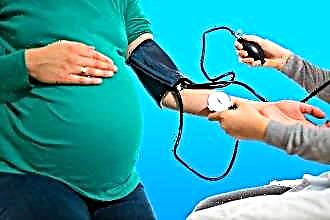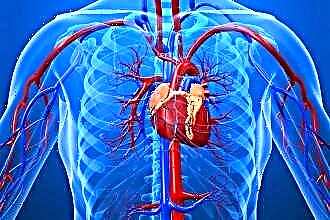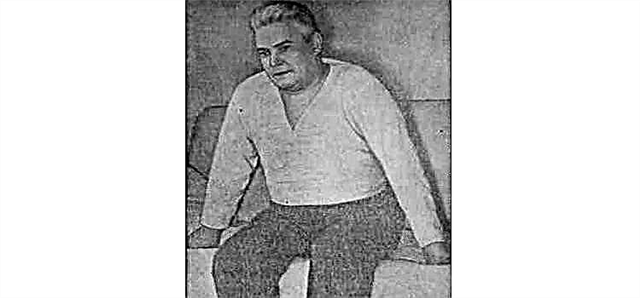Human pressure is indicative of a lot. The cardiovascular system performs one of the main functions - it provides blood circulation throughout the body. With a decrease in the upper systolic pressure and maintaining the lower one within the normal range, they speak of the development of hypotension, which is manifested by weakness, dizziness, apathy, and decreased performance. To identify the cause of your poor health, you need to see a doctor.
What is systolic pressure and what does it determine?
 Arterial pressure (BP) figures are determined by two indicators: systolic upper SBP, diastolic lower DBP. Measured with a tonometer in millimeters of mercury (mm Hg). For an adult healthy person, the norm is from 120/80 mm Hg. up to 100/70 mm Hg Low numbers can be a variant of the norm if such pressure is observed throughout life and is "working".
Arterial pressure (BP) figures are determined by two indicators: systolic upper SBP, diastolic lower DBP. Measured with a tonometer in millimeters of mercury (mm Hg). For an adult healthy person, the norm is from 120/80 mm Hg. up to 100/70 mm Hg Low numbers can be a variant of the norm if such pressure is observed throughout life and is "working".
The exception is situations of sudden or prolonged decrease in blood pressure and deterioration of the general condition, which may indicate pathology of the heart, kidneys, psychoemotional fatigue, metabolic disorders, hormonal imbalance. To understand the problem of low systolic blood pressure with a constant normal diastolic pressure, you need to understand what this condition may indicate.
Upper pressure is the moment of contraction of the cavities of the heart and the expulsion of blood through the arteries during systole. Low upper pressure may indicate congenital or acquired cardiac pathology, which is taken into account when prescribing a survey plan, treatment regimen and further observation of the patient.
Reasons why the top figure may go down
In the modern rhythm of life, such factors as stress, insufficient rest during intense workload, psycho-emotional experiences, and untimely treatment of major diseases lead to a decrease in blood pressure.
Other causes of low upper pressure are listed below:
 Vegeto-vascular dystonia of the hypotonic type.
Vegeto-vascular dystonia of the hypotonic type.- The period of pregnancy, especially the first trimester, and in patients with severe toxicosis.
- Hormonal disorders, diabetes, hypothyroidism, adrenal insufficiency.
- Consequence of injuries to the head, neck, spine.
- Physical fatigue, especially in professional athletes.
- Congenital or acquired cardiac pathology, valve defects, improper selection of drugs for hypertensive patients.
- Neurosis, depressive disorder, chronic fatigue syndrome.
- Frequent change of time zones, climate.
- A sharp change in the weather.
- Dehydration, fatigue, a consequence of infectious diseases, injuries, operations, blood loss.
Decreased systolic versus normal diastolic: why does this happen?
The upper pressure decreases with a decrease in the contractility of the heart. This can happen when:
- damage to the heart and large vessels with atherosclerosis, rheumatism;
- decreased vascular tone;
- heart failure;
- dysfunction of the autonomic nervous system;
 increased secretion of the hormone acetylcholine and decreased adrenaline;
increased secretion of the hormone acetylcholine and decreased adrenaline;- taking sedatives to slow your heart rate.
However, it should be remembered that it is almost impossible to distinguish low systolic pressure from high diastolic pressure on your own. A single measurement of blood pressure at home is not enough to make a correct diagnosis. Doctors cardiologists, therapists and neuropathologists focus the attention of patients on the need for examination by a specialist. Within the walls of a medical institution, special instrumental diagnostics are carried out to identify low SBP.
How to solve the problem?
If low SBP is due to chronic fatigue, insufficient rest or emotional distress, taking vitamins, sedatives based on Valerian, Motherwort, Mint and Melissa to normalize night sleep is indicated to improve the condition. For neurological disorders, B vitamins with magnesium, ascorbic acid are recommended. However, it should be understood that such treatment is more prophylactic, and is not able to eliminate hypotension. Without a doctor's examination, it is impossible to independently identify the true cause of the violation and raise the upper pressure. Alternative therapy for low systolic blood pressure is not recommended, since taking such drugs can mask manifestations of hypotension, while the underlying cause of the disease will not be identified.
Diagnostic methods
 All patients with low blood pressure undergo:
All patients with low blood pressure undergo:
- Electrocardiogram for assessing heart rate, identifying bradycardia.
- Three-time measurement of blood pressure on both hands to assess the difference in pressure, counting heart rate, pulse.
- Holter 24-hour monitoring. Allows you to identify the peaks of the lowest and highest SBP over a period of 24 hours, other deviations.
- Doppler ultrasound, Echocardiography. Evaluates the condition of the cavities of the heart, large and small vessels, blood flow, the operation of the valve apparatus.
- Listening to the work of the heart with a phonendoscope.
Additionally, laboratory diagnostics are carried out: a clinical analysis of blood and urine, hormones taking into account symptoms, biochemical markers of the lipid spectrum, renal and liver tests.
What drug therapy is most often prescribed in such a case?
With a reduced upper pressure, treatment is prescribed after receiving the conclusions of all examinations. It is extremely important to identify the cause of the disorder in order to choose the correct therapy regimen.
Currently, to raise blood pressure are shown:
| 1. | Medications. | Caffeine, Pantocrine, Citramon, Etilephrine, Rodeola Tinctures, Leuzea. |
| 2. | Dosed physical activity. | Walking, stretching, jogging, gentle exercise 30 minutes a day. |
| 3. | Physiotherapy. | Cryomassage, acupuncture, magnetotherapy. |
| 4. | Rejection of bad habits. | Smoking, alcohol, energy drinks. |
| 5. | Normalization of work, sleep and rest, nutrition. | Night sleep for at least 8 hours, daytime 30 - 60 minutes. Airing the room before bed. |
Medication regimens include:
 With vegetative-vascular dystonia, the intake of fortifying and tonic preparations based on herbal ingredients, Caffeine, tinctures from the roots of Ginseng, Schisandra.
With vegetative-vascular dystonia, the intake of fortifying and tonic preparations based on herbal ingredients, Caffeine, tinctures from the roots of Ginseng, Schisandra.- For chronic fatigue and depressive disorder, antidepressants, sedatives, hypnotics are indicated to correct persistent insomnia.
- To improve blood flow, massage of the body, neck and head is recommended.
- In diabetes, glycemic control, regular intake of antihyperglycemic drugs are shown, and in case of hormonal disorders, appropriate hormone therapy.
- If another concomitant pathology causing hypotension is identified, pathogenetic therapy is prescribed.
How does a permanent decrease in SBP affect the patient's life prognosis?
The prognosis for low upper pressure is determined by the cause of the hypotension. In the absence of serious concomitant cardiac disease, kidney disease, or endocrine disorders, the prognosis is relatively good.
If low SBP is detected at the age of 25 years, there is a high probability of normalization of blood pressure by means of lifestyle correction. At an older age, patients are recommended a more thorough examination by a cardiologist, therapist and neuropathologist, drug therapy and physiotherapy.
Conclusions
Hypotension is determined when the pressure drops below 120/80 mm Hg, it can be both a normal variant and a pathology.Possible cases when only one indicator decreases - SBP, while the upper pressure is low, and the lower is normal. Symptomatically manifests itself as general weakness, increased fatigue, headaches and dizziness. Often occurs after physical or psycho-emotional overwork. May be a sign of heart disease or concomitant disease, and requires a comprehensive examination. According to the conclusion, the doctor prescribes drug therapy, issues recommendations for normalizing the daily regimen and rest.

 Vegeto-vascular dystonia of the hypotonic type.
Vegeto-vascular dystonia of the hypotonic type. increased secretion of the hormone acetylcholine and decreased adrenaline;
increased secretion of the hormone acetylcholine and decreased adrenaline; With vegetative-vascular dystonia, the intake of fortifying and tonic preparations based on herbal ingredients, Caffeine, tinctures from the roots of Ginseng, Schisandra.
With vegetative-vascular dystonia, the intake of fortifying and tonic preparations based on herbal ingredients, Caffeine, tinctures from the roots of Ginseng, Schisandra.

